Digital Myths and RealitiesText and photography copyright Darwin Wiggett. All rights reserved.
Editor’s Note - Thumbnails are links to larger images, presented in slide show format.
Read any print or online photography magazine and you’d think that digital photo capture is the ‘second coming’ – that photographic history will now be divided into BD (before digital) and AD (after digital). And that AD is the era of creative enlightenment. “Going digital has made me a much better photographer” is the most common statement made by recent digital converts. Others believe, “I am more creative with digital because it gives me the freedom to experiment”. Recently, I read this quote from a digital photo guru, “Photographers who continue to shoot with film are committing professional suicide”.
All this hype has left many film photographers feeling pretty insecure. Is digital really ‘all that’? And should film shooters trash their Velvia and TMAX in favor of CMOS chips and LCD screens? During 2004 I shot film from January to March, digital from April to September, and film from October to December. In the process I learned a lot about the strengths and weaknesses of both media, and about who I am as a photographer. Maybe my experiences will help some of you decide if film or digital is a better choice for you.
The Genesis
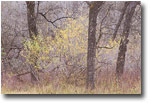
Photo 1a
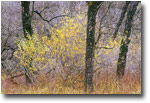
Photo 1b
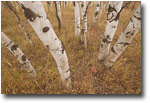
Photo 2a
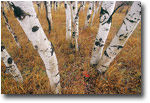
Photo 2b
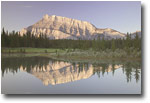
Photo 3a
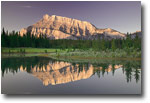
Photo 3b
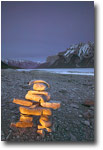
Photo 4
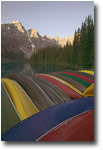
Photo 5a
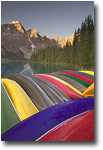
Photo 5b
|
|
First, let me stress that I am not “anti-digital”. On the contrary, I have been using Photoshop since version 2.5 and was among the first photographers sending stock photo agencies digital output for their image libraries. Second, I firmly believe there are no universal answers; photographers are individuals and what’s one person’s salvation is another’s curse. Different strokes for different folks. If I have an axe to grind, it’s this: it seems that the digital converts are so taken with their new ‘religion’ that anyone that doesn’t follow their ideology is just another wasted soul. They seem to have no patience for any point of view that doesn’t match theirs.
So, you might wonder, “if you have been digitizing your film for the last ten years wouldn’t it make more sense to shoot digital in the first place?” The answer is simple, up until recently the quality of digital files didn’t match the quality of film and when it did the technology was far too expensive or far too limiting for use for general photography (e.g. $40,000 scan backs for MF and LF cameras). It wasn’t until the introduction of the Canon EOS-1ds that digital photography became a viable option for the advertising stock photographer (what I do for a living). Indeed the only digital files that most stock agencies will accept are from the Canon 1ds or from MF camera backs. Few high end stock agencies will accept files from any of the 6 or 8 MP cameras. That may change (and should) but most agencies want the best files possible and that means a big MP camera (11MP or higher) or high quality film scans. So for stock photographers in the major agencies these two routes are currently the only two options. For editorial stock shooters, photojournalists, most wedding and portrait shooters, hobbyists, and for personal use 6 to 8MP cameras are more than adequate.
In early 2004 I was commissioned to do a book on “How to Photograph the Canadian Rockies”. I had a fair amount of stock images on film, but really wanted to shoot the remainder of the images using digital – all the hype, especially about the 1ds had me questioning my continued use of film. I wanted to find out what I was missing out on. And I wanted digital files that my agency would embrace. Rather than spend big bucks on a Canon 1ds, I borrowed one from The Camera Store (www.thecamerastore.com) in Calgary for six months to see if it fit my shooting style (many thanks to Peter Jeune for his generous loan of the equipment).
The Enlightenment
Myth 1 – Digital is better than film.
My first week of shooting with the 1ds proved to me that the 1ds matches or surpasses the technical quality I get with 35mm film. The files were beautiful with less noise and grain, and sharper details than the scan from film of the same scene using my Imacon Photo Scanner. Based on quality of the file, the 1ds file beats scanned 35mm film (not by huge amounts, but definitely a noticeable difference). Image quality was not an issue.
But what really shocked me was the huge difference in how the two media record the same scene. Velvia gave me renditions that on the light table were snappy and dripping wet with color (Photos 1b and 2b). The Canon 1ds produced renditions that were flat and pale by comparison (photos 1a and 2a).
It soon became obvious to me that in-camera capture was just a starting point with the 1ds – either I accepted the milky, smooth, pastel look of 1ds images (which some folks absolutely love) or else I needed to massage each 1ds file in Photoshop to make it look more like the film rendition that I was used to.
So for me digital isn’t better or worse, it’s just different… kinda like comparing oil painting with watercolors. I simply had to adapt to this new tool or make it adapt to me. I chose the latter and what that means is a whole lot of time tweaking images on the computer.
Myth 2 – Digital saves you time.
I mistakenly thought shooting digital would save me loads of time simply because I would no longer have to scan my slides for submissions to stock photo agencies. My digital files would be ready-made every time I pressed the shutter! The reality turned out to be much different. When I returned from a two week film photography trip it took me four days to have my film images processed, edited (most end up in the garbage can), captioned, sorted, filed, and scanned for submission.
With digital I had more demands on my time both at home and in the field. Every evening in the field I had to transfer the images from my camera to a laptop, and then make a backup of the files to a portable hard drive. I hid the laptop and the hard drive in different parts of the vehicle in case of a break in. With film, I just tossed the exposed rolls into my dirty laundry bag (no-one steals soiled undies and smelly socks!). The digital camera added at least an hour (usually more) onto each shooting day – time that I would generally have used sleeping.
And things got worse once I was home. For every day I spent shooting with the 1ds, it took another full day to process the images. Why so long?? My style relies on color and dramatic light for effect and with the 1ds I needed to do a RAW conversion of every candidate image to see if I liked the final ‘look’ of the image. If I did, I saved the shot, if not I deleted it. That process of editing takes a lot of time, no matter what workflow or conversion software I used. For example photo 3a shows a RAW capture from the 1ds, while photo 3b shows the same image after raw conversion and Photoshop manipulation. I need to do the conversion and Photoshop work before I can tell if the photo works or not. With film, I can look at a bunch of bright, colorful slides on the light table and know instantly which ones are worth keeping and which ones get tossed. Film is much faster to edit than digital files.
Because the editing process with digital is so time consumptive, it becomes difficult to discard a ‘mediocre’ shot when I’ve invested so much time working on it just to view its potential. I found myself keeping digital images that I would have thrown out had they been slides. I ended up keeping a lot of digital photos from the summer but overall the collection is diluted and weaker in content relative to the ‘keepers’ from my film shoots.
For me, shooting digital meant much more time in front of the computer both in the field and at home. With film, I spent less time in front of the computer and more time shooting and the results tend to be stronger and more cohesive.
Myth 3 – Digital makes you a more creative photographer.
A Stock Agent’s Perspective
My stock agencies love the quality of digital camera files, they love digital delivery, and e-commerce, and they love not handling irreplaceable original slides, but ask them if digital cameras have improved the creativity of shooters and the answer they give may surprise you. In a recent newsletter from one of my agents, the photo editors were lamenting the overall decline of the photographic content of submissions received. It seems that when photographers were shooting with film they sent in tightly edited submissions that had high impact and strong content. Now, shooters are just sending in CD’s or DVD’s loaded with every digital photo they have ever taken and saved. There seems to be very little editing or thought put into their submissions – just “here is my stuff – everything, good, bad, or otherwise – you pick what you want”. According to this particular agent, digital photography has simply amplified mediocrity.
A Shooters Perspective
I can understand the seductive power of the instant feedback of digital. You look on the LCD and you can see if you nailed the shot or not. This ability is especially important if you are shooting moving subjects such as sports or wildlife. One look and you know instantly if you need to adjust your shutter speed, if you have captured the subject in the frame, or if you need to make adjustments in your timing. The same can be said for shooters experimenting with light painting, flash effects, or trying to capture difficult subjects like northern lights. Digital lets you fix shooting errors on the spot. For example in photo 4, I did three attempts at light painting this Inukshuk, each time reviewing the image on the LCD screen and making adjustments in my technique until I got the shot I wanted. With film, I wouldn’t have had the opportunity to make these fixes on site. This is a significant benefit to shooting digital.
For novice shooters this instant feedback can shave years off the learning curve. I have never seen folks advance so fast in photography as I have since the advent of digital cameras. It is much easier to learn when you see your mistakes immediately after pressing the shutter rather than waiting till months later when you finally take in your film to get developed.
But for experienced photographers, who have perfected their techniques using film they get better shots by concentrating on the subject, the lighting, and the composition, with eyes glued to the viewfinder waiting for the ‘decisive’ moment. The LCD holds little benefit to these kinds of photographers.
A Photography Workshop Leader’s Perspective
Some folks get so addicted to the LCD screen that they miss many shooting opportunities. A friend of mine who leads photography workshops for one of the largest photo tour companies in the world says that the digital shooters on his trips spend 80% of their time in the field hunched over their LCD screens missing shot after shot of great light and peak action. Then, to top it off, they miss further opportunities because they are busy downloading, and/or working on their images on the computer rather than being out shooting with the rest of the group. With film, there are no distractions like the LCD screens, laptops, constantly drained batteries, software issues, firmware updates etc., etc., – you go on a trip and shooting is your focus - period. According to my friend, the film photographers are always busy shooting – the digital photographers are, in his words, “always busy dicking around”.
Another professional shooter I know has told me that since he started shooting digital, he’s not as careful to nail the shot in-camera as he was with film. “If it is close enough, that’ll do” he says, I can always fix it in later in Photoshop”. Another shooter tells me in confidence, “I don’t work a situation as extensively when shooting with digital – if I see that I got a shot on the LCD screen, I move on”.
My Perspective
I too have found that shooting digital makes me a little lazy. I often won’t go to the same efforts with digital to perfect the shot in-camera like I would if I were using film. With film, I am extremely careful about contrast control, altering the lighting with reflectors, or fill-flash, or more commonly with filtration (grad filters, warming filters, and polarizers) to make the whole scene recordable on the emulsion. With digital I often have the ‘fix it later attitude’ which in the end creates even more work for me behind the computer. In photo 5a I should have used a grad filter to even out exposure between the foreground canoes and the bright peaks and sky. Had I shot this image on film, I would never have left off the grad filter. With digital, I thought, I can even out the exposure later in the computer – I did (photo 5b) but it cost me a lot in terms of time.
When comparing my film and digital images from 2004, the film shots seem more thoughtfully crafted and are technically perfect. They require little if any editing in Photoshop. When each frame costs money to produce, you think seriously before pressing the shutter button (especially when using MF or LF film). With digital there is no financial burden to pressing the shutter so I just shoot – often when I really shouldn’t be. Some folks call this the ‘freedom to experiment”. I call it the “freedom to be lazy”.
I believe if you are creative with film, you’ll be creative with digital. And if you presently shoot mundane images with film, switching to digital will just mean you’ll create mundane work in a new medium. Digital doesn’t make you more creative, it is just a tool, tools don’t make art, or engender creativity, they are just a mechanism for expressing it. Creativity comes from within, not from the gear you use. Digital won’t make you a better photographer… you will get better by learning to use your gear as a means of personal expression. For many people digital is an easier tool to learn than film. If you are already a confident film photographer, digital won’t have much to teach you that you don’t already know.
Myth 4 – Digital Photography offers more Creative Techniques than film.
No, digital offers different means of expression than film. Some techniques work exclusively with film, others work better in digital, and still others work equally well with both media. Multiple exposures, slide sandwiches, long exposures, and cold-weather and extended backcountry wilderness photography is more easily accomplished with film. Digital shines with its instant feedback to help photographers make on the spot decisions about aperture, shutter speed settings or lighting effects. Novice shooters gain more from this feedback than do experienced shooters. With digital it is easier to do things like extend the tonal range across an image by merging two separate exposures, one for the shadows, and another for the highlights into one image. As a shooter you need to be aware of the strengths and weaknesses of each capture type. And choose the one that best fits into your style of expression. If you plan to specialize in shooting landscapes by moonlight or if you go on long backpacking trips into the wilderness then film is the wisest choice. If you want to shoot intricate studio lighting set-ups, do wildlife photography, or specialize in motion effects, I would recommend digital.
In conclusion I discovered that much of the hype about the benefits of digital capture don’t apply to me. I was fortunate to have been able to immerse myself into digital for six months, and to learn both the advantages and the pitfalls of digital capture. Will I buy and use a digital camera in the future? You bet! But I am also keeping and using my film cameras. There is a time and a place for both types of capture in my world of shooting. I want to leave my options open, so that I can use the tool that best helps me express my personal vision. Digital or film? It doesn’t matter to me… it’s the results that count. A great shot is a great shot no matter how, when, or where it is captured.
DW-NPN 0343
About the author...
Darwin Wiggett and his wife Anita Dammer are the proprietors of Natural Moments Photography. Anita has 17 years experience as staff photographer for the Glenbow Museum in Calgary and is currently the editor-in-chief of Photo Life magazine. Darwin has been shooting stock since 1990, and has two books published by Whitecap in Vancouver; Darwin Wiggett Photographs Canada and Seasons in the Rockies. Darwin's newest book, How to Photograph the Canadian Rockies will hit the shelves in the spring of 2005. Together they specialize in landscape, nature, animal, humor and kid photography and are represented by various stock agencies worldwide. Their primary stock agent is First Light in Toronto, Canada. You can view more of Darwin's work at www.darwinwiggett.com and on his online portfolio.
Comments on NPN creative nature photography articles? Send them to the editor.


|



